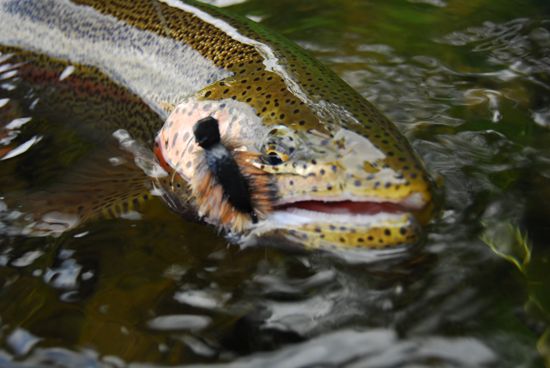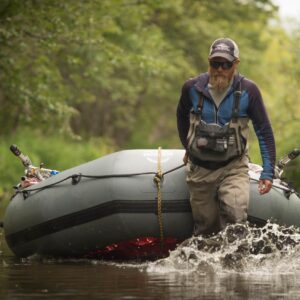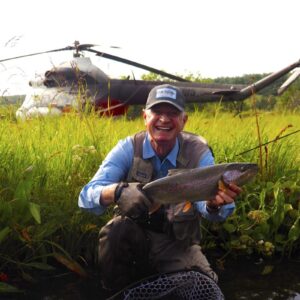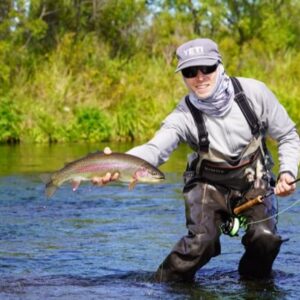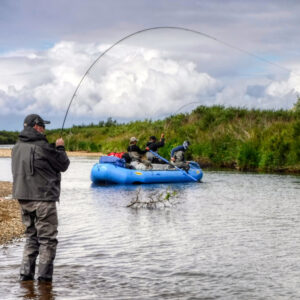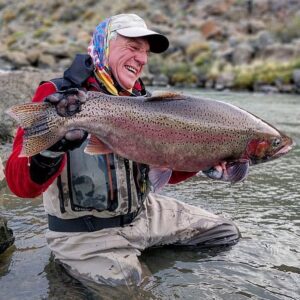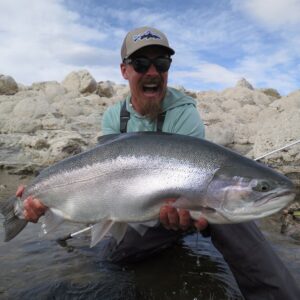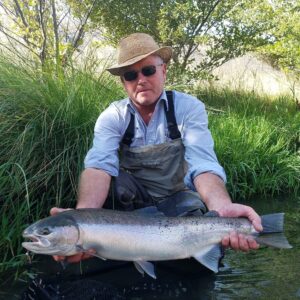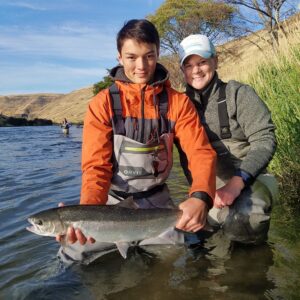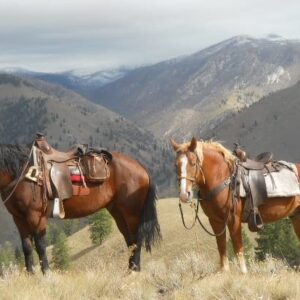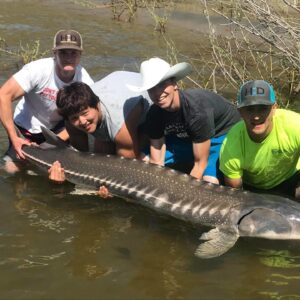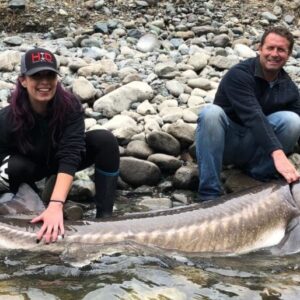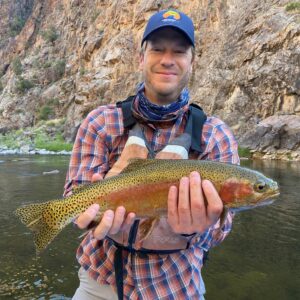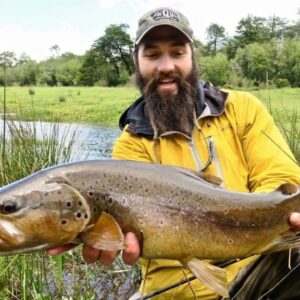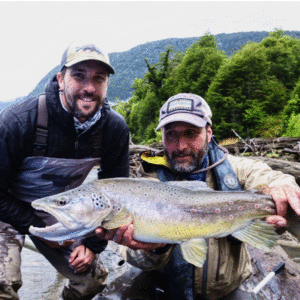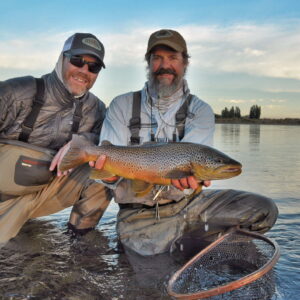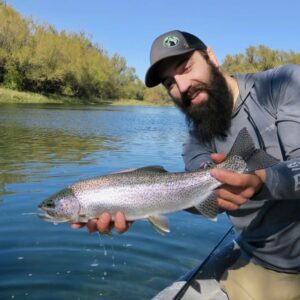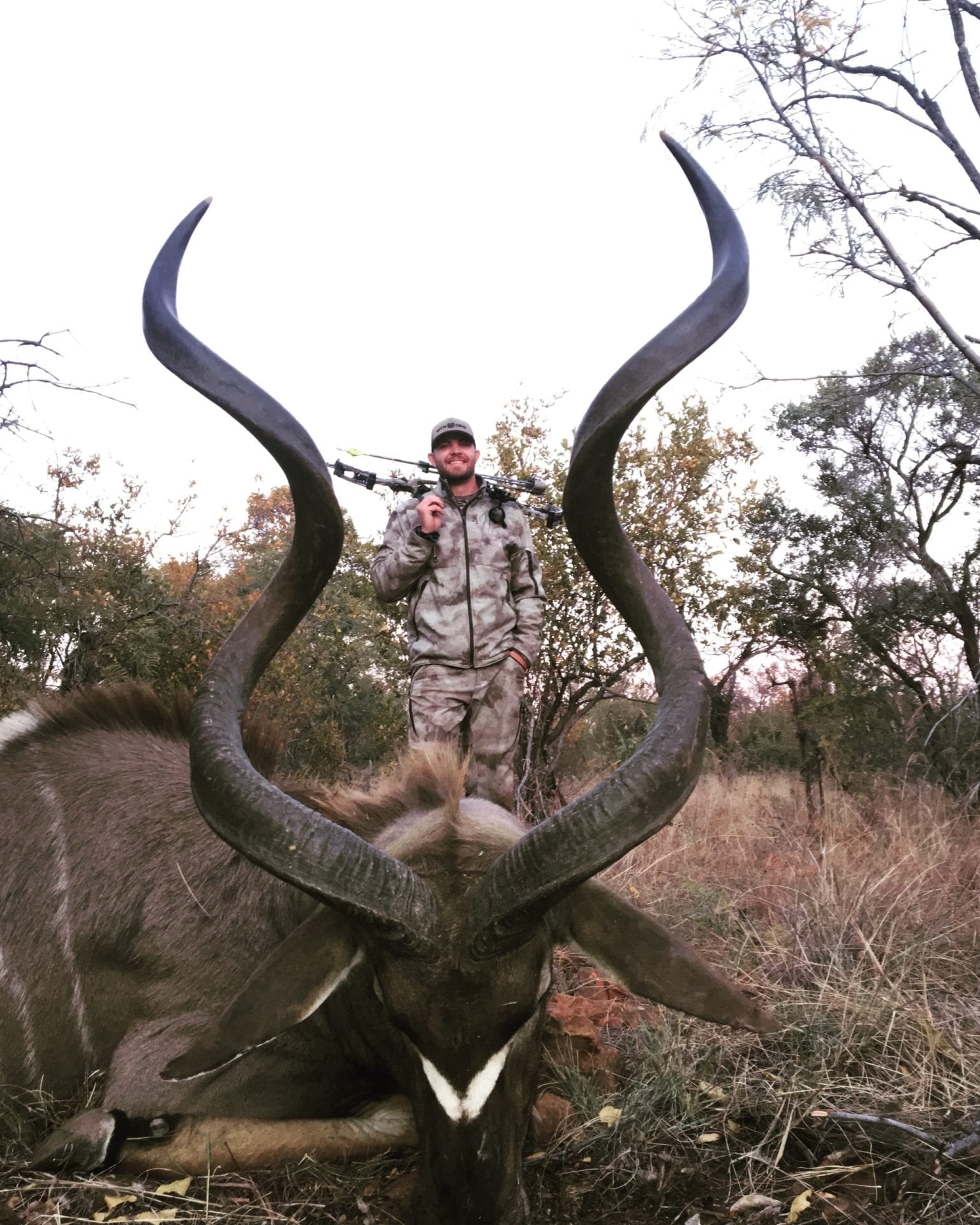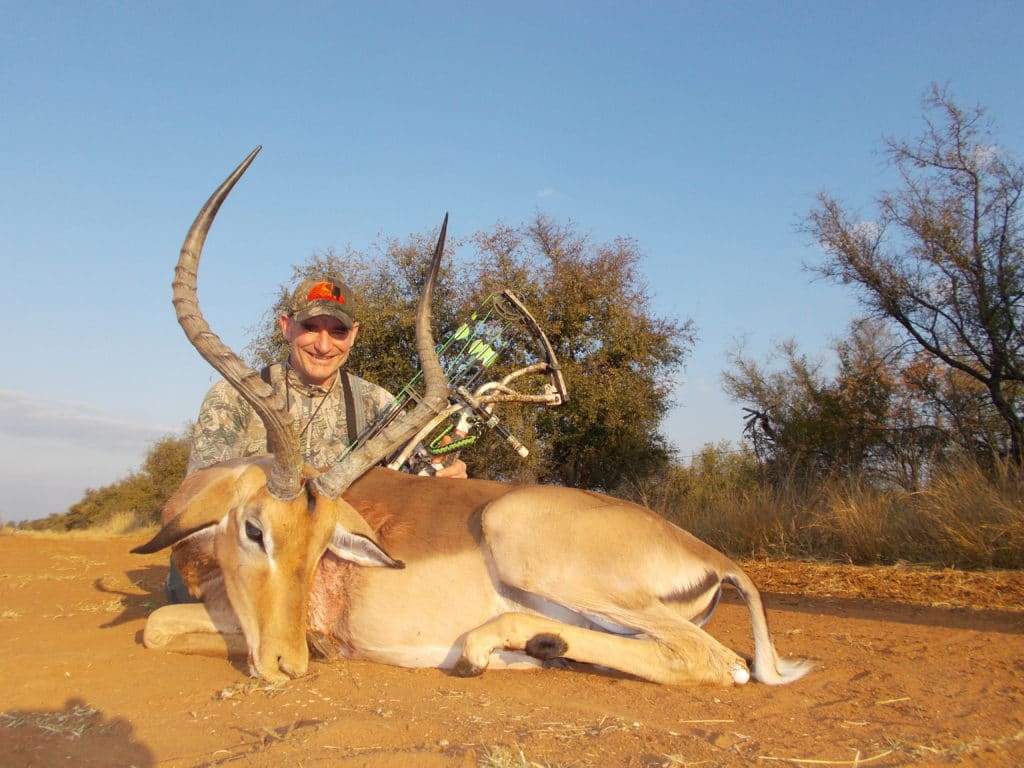A highly sought-after game fish, especially for fly fishing, trout fishing is something that offers everything anglers love.
When you’re ready to start planning your trip, just contact us or fill out the form on this page. Be sure to let us know exactly what kind of trip you have in mind, and we’ll do our best to help you find the perfect outfitter and get it booked.
Whether you’re looking to land the Trout Royal Slam or just want to catch a few brookies, we work with wide variety of trout fishing guides and outfitters in all of the major areas.
SPECIES OF TROUT
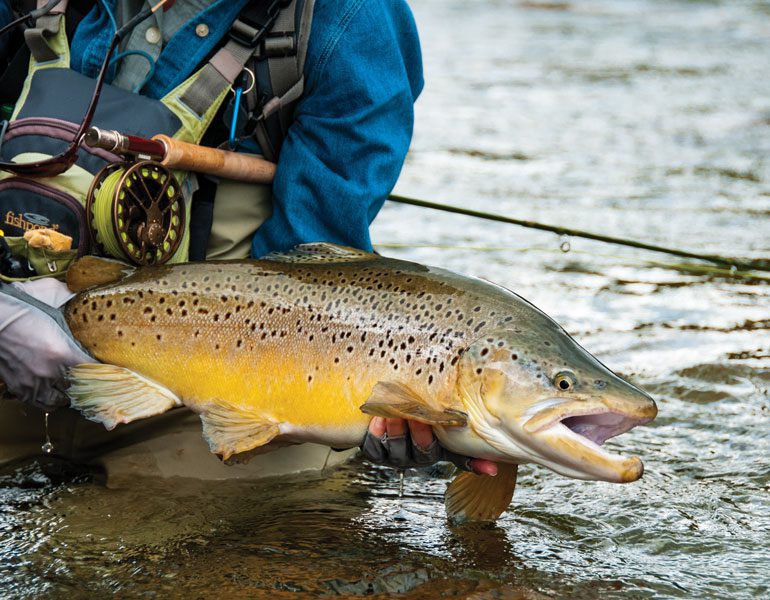
Brown Trout Fishing
The brown trout (salmo trutta) is a common and widely distributed member of the salmonidae family that gets its name from the yellow-orange-olive-brown sides, which are underneath dozens of black, brown, and red spots and iridescent cheeks. They are popular gamefish and can be found worldwide.
Brown trout are more predatory than their rainbow trout cousins, fight hard, can grow to enormous size. These European natives have been spread across the world, and brown trout fishing can become a lifelong addiction for anglers almost everywhere.
Origin and Habitat Preferences of Brown Trout
Brown trout are native to most of Europe (including France, Germany, Greece, Iceland, Ireland, Norway, Russia, and Sweden), a small swath of northern Africa (including Tunisia, Algeria, and Morocco) and western Asia (including parts of Afghanistan, Armenia, Pakistan, and Turkey).
Brown trout habitat includes cold freshwater streams, rivers, lakes, and ponds, and for sea-run brown trout, cold parts of the Atlantic Ocean where the average temperature stays below 70 degrees year-round. They prefer well-oxygenated water, often from high-gradient/fast-flowing mountain streams. Brown trout prefer locations with overhead cover (overhanging riverbanks, tree limbs, etc.)
Brown Trout Life-Cycle
Sexually mature brown trout typically spawn in fall. Browns will migrate upstream (usually) to their natal spawning grounds to lay and fertilize thousands of eggs per fish in spawning beds known as redds. In one to two months (depending on habitat), eggs hatch into what are called fry (baby fish), then fingerlings (juvenile fish), and they are considered adults by the end of their first to third years when they are capable of spawning their own eggs.
They typically live four to six years, but can live to be older than 10 with the right circumstances.
Brown Trout Diet
Brown trout feed primarily on all stages of aquatic invertebrates like mayflies, caddisflies, stoneflies, midges, and crustaceans (scuds, sowbugs, and crayfish), and small baitfish including of their own species. They also eat fish eggs when present, worms (both aquatic and terrestrial annelids), zooplankton, and daphnia in stillwaters (lakes, reservoirs, and ponds).
Brown trout are more predatory and piscivorous than many other species of trout. They are generally opportunistic feeders, meaning they will eat any attainable food source if it provides more energy than it expends to consume, but they will get selective under certain circumstances of abundance. Because of their feeding habits, they are ideal quarry for fly anglers.
If you’re interested, contact us about brown trout fishing.
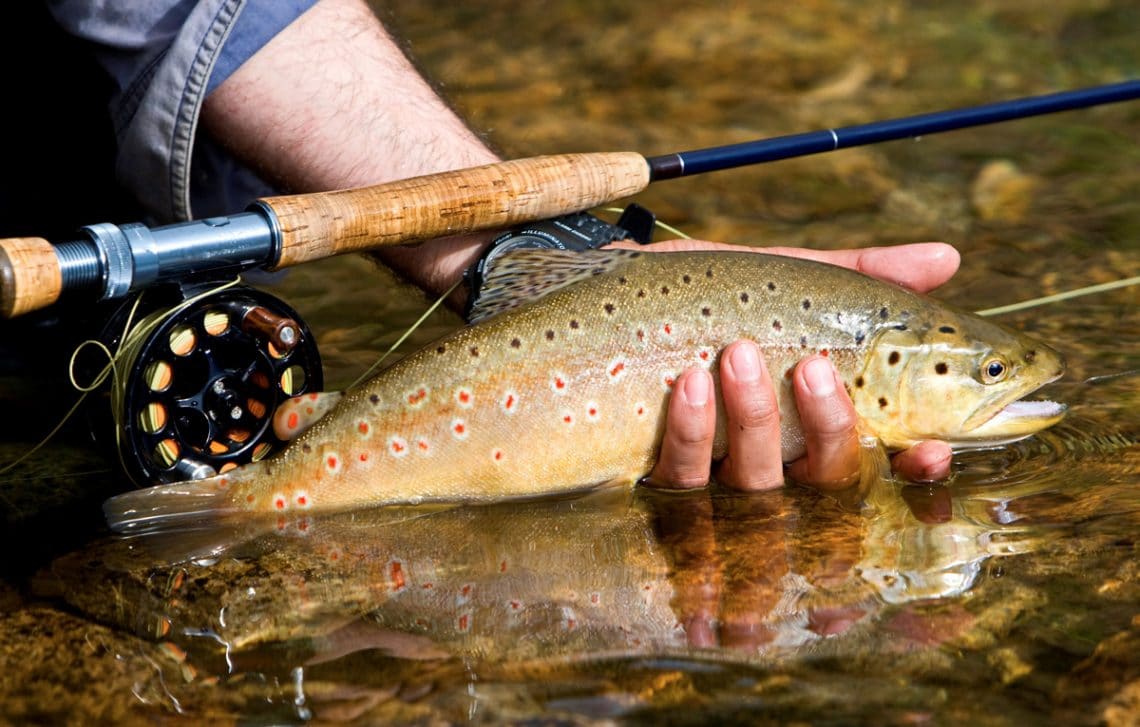
Cutthroat Trout
The cutthroat trout (Oncorhynchus clarkii) is a fish species of the family Salmonidae native to cold-water tributaries of the Pacific Ocean, Rocky Mountains, and Great Basin in North America. As a member of the genus Oncorhynchus, it is one of the Pacific trout, a group that includes the widely distributed rainbow trout. Cutthroat trout are popular gamefish, especially among anglers who enjoy fly fishing. The common name “cutthroat” refers to the distinctive red coloration on the underside of the lower jaw. The specific name clarkii was given to honor explorer William Clark, coleader of the Lewis and Clark Expedition.
Habitat Preferences of Cutthroat Trout
Cutthroat trout usually inhabit and spawn in small to moderately large, clear, well-oxygenated, shallow rivers with gravel bottoms. They reproduce in clear, cold, moderately deep lakes. They are native to the alluvial or freestone streams that are typical tributaries of the rivers of the Pacific Basin, Great Basin and Rocky Mountains. Cutthroat trout spawn in the spring and may inadvertently but naturally hybridize with rainbow trout, producing fertile cutbows. Some populations of the coastal cutthroat trout (O. c. clarkii) are semi-anadromous.
Several subspecies of cutthroat trout are currently listed as threatened in their native ranges due to habitat loss and the introduction of non-native species. Two subspecies, O. c. alvordensis and O. c. macdonaldi, are considered extinct. Cutthroat trout are raised in hatcheries to restore populations in their native range, as well as stock non-native lake environments to support angling. The cutthroat trout type species and several subspecies are the official state fish of seven western U.S. states.
Subspecies of Cutthroat Trout
With over a dozen recognized subspecies representing four major evolutionary/geographical groups, these trout vary wildly in size and looks.
- Coastal Cutthroat Trout – Found from as far northwest as Alaska’s Kenai Peninsula all the way south along the Pacific Coast to northern California’s Eel River. This subspecies is rarely found more than 100 miles from the coast and comes in both resident forms that stay in freshwater and sea-run forms that venture into the marine environment. If you’re fishing for Cutthroat Trout in Alaska, this is the subspecies you’ll be targeting. If you find yourself in Washington, there is even a unique population of coastal cuts endemic to Lake Crescent.
- Great Basin Cutthroat Trout – The Great Basin spans nearly all of Nevada, much of Oregon and Utah, and portions of California, Idaho, Wyoming. This region was shaped by two major late Pleistocene lakes: Lake Lahontan and Lake Bonneville — and there are two subspecies that share the namesake: the Lahontan cutthroat trout and Bonneville cutthroat trout. These are the state fish of Nevada and Utah, respectively. Lahontans are the largest member of the cutthroats, with lake-dwellers reaching upwards of 40 pounds.
- Colorado River Cutthroat Trout – Found in the tributaries of the Green and Colorado rivers.
- Rio Grande Cutthroat Trout – Occurs in New Mexico and southern Colorado. The Rio Grande Cutthroat is New Mexico’s state fish.
- Greenback Cutthroat Trout – The easternmost subspecies. It’s found in Arkansas and the headwaters of the South Platt River on the eastern slopes of the Colorado Rocky Mountains — it’s the official state fish of Colorado.
- Westslope Cutthroat Trout – Native to northern stretches of the Rocky Mountains in Idaho, Montana, British Columbia and Alberta. It’s also called the blackspotted trout and is Montana’s state fish.
- Yellowstone Cutthroat Trout – Native to upper Snake River, Yellowstone Lake and Yellowstone River and can be found in Idaho, Montana and Wyoming.
- Snake River Fine-Spotted Cutthroat Trout – Considered by some to be a unique population of Yellowstone cuts.
If you’re interested, contact us about Cutthroat trout fishing.
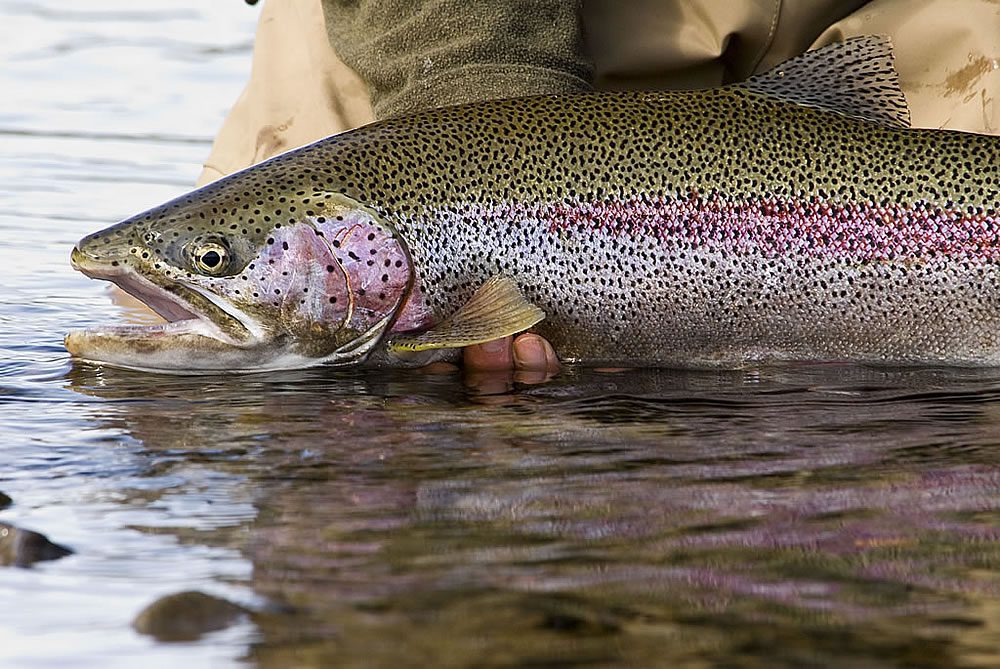
Rainbow Trout
Rainbow trout are a cold water species and found throughout North America, Europe, Argentina, Chile, Iceland, New Zealand, and Russia. With populations of rainbow trout spread across the globe, the opportunities are virtually endless when it comes to fly fishing for this amazing fish.
The rainbow trout is native to the rivers and lakes draining into the Pacific on the west coast of North America. Their range extends from Mexico in the south to Alaska in the north. Rainbow trout are also found on the Kamchatka Peninsula on the Pacific coast of Russia (not far from Alaska).
Rainbow trout are so called because they may have a very distinct red or pink lateral line. They are often called ‘redband trout’, although strictly speaking this description relates to rainbow trout from the Columbia, MacLeod or Great basins of the western USA.
Rainbow trout biology
Rainbow trout are very similar to brown trout in terms of their feeding habits, taking mostly invertebrates on or below the surface of the river or lake. Their primary diet of river flies is supplemented by terrestrial insects or other fish.
Their lifecycle is also very similar except that, in the wild, rainbows will spawn in the spring, whereas brown trout spawn in the late autumn or winter. Spawning times can be quite variable and are dependent on water temperature — they can spawn as early as January in warm areas such as California or as late as June in colder areas. They generally spawn as water temperatures are rising.
Both rainbow and brown trout can have a sea-going (anadromous) form: sea trout are brown trout that have spent some of their life at sea, steelhead are rainbow trout that have gone to sea. Where such a strategy is adopted, the young fish (parr) live in freshwater, and then smoltify and go to sea at around 2 years of age. Having spent some time (often years) at sea, steelhead return in two distinct phases, either the summer run (May to October) or winter run (November to April). Both sea trout and steelhead can be ‘repeat spawners’ – they will spawn, return to sea and come back to spawn again, unlike Atlantic and Pacific salmon which are more likely to die after spawning.
If you’re interested, contact us about Rainbow trout fishing.
TROUT FISHING GUIDES WE RECOMMEND
Live Like You Mean It
Contact Us
We've helped thousands of OI clients plan their adventures
Our team of professional consultants are ready to help you research, book and plan an amazing trip with one of our amazing outfitter partners around the world.
I didn't think an experience like this was possible.
This trip, was, for me at least not just a trip, for me it was a real adventure, a real experience. I love the wilderness and this trip afforded me the opportunity to connect with the Alaskan wilderness in ways very few people do. It was an experience I will never forgot in a place I can’t wait to get back to.Oliver Fischer
The outfitter handled everything perfectly.
We were thankful that Outdoors International hooked us up with a great outfitter because they were able to find us an acceptable alternate on short notice. Overall the two year process to get this float in was seamless and worry free. Just like it should be.Thank you, Stan Masneri
What an amazing experience!
The lodge was out of this world! Our rooms, the delicious food, the incredible wildlife and the scenery were amazing. Our photo safari guide was truly exceptional and had us on animals almost constantly. We saw over 30 different species and had some incredible up close experiences. Africa is amazing!Scott Navares
Copyright 2005-2025 © Outdoors International™ · All Rights Reserved.


